
During the first 30 years of cinema, when the frontiers were open and the language of film reinvented itself every day, more women were involved in producing and directing films than at any time until this century. A new box set is devoted to demonstrating this and attempting to explain why that gravy train ground to a halt as America’s commercial industry consolidated in Hollywood.
Among the many silent film packages issued in 2018, the crowning glory is Kino Lorber’s magnificently curated six-disc box of Pioneers: First Women Filmmakers, made in cooperation with the Library of Congress, the British Film Institute and others. Only two of its shorter items overlap with Flicker Alley’s equally important 2017 box, Early Women Filmmakers: An International Anthology, and these have slightly different presentations.
Disc 1 is devoted to Alice Guy-Blaché, the world’s first woman filmmaker and possibly the creator of fictional narratives. In 1896, when films were a minute long and used for documentary snapshots or simple gags and performances, she created The Cabbage Fairy, a fantasy in two shots — thus also inventing “le cinéma fantastique“. As Leon Gaumont’s head of production, she was responsible for years of innovation, some of which can be found in Kino’s Gaumont Treasures.
In 1907, she married Herbert Blaché and they came to the US to run Gaumont’s American branch. In 1910, they broke away to found Solax. The films on Kino’s disc run from 1911 to 1913, and it was during 1912 that Solax opened a large successful studio in the flourishing film town of Fort Lee, New Jersey. These one-reelers, some tinted, last about 12- to 16-minutes and are mostly presented in the contemporary style of using title cards to announce the action in the forthcoming scene.
These are comedies or action films in which a woman or little girl often saves the day, sometimes with firearms. Although Guy-Blaché famously advised her actors to “be natural”, some of the men play to the rafters with barnstorming gestures, especially in the earlier titles.
Algie the Miner (1912) focuses on an effete young man, a sissified dandy with very limp-wristed gestures, who “proves he’s a man” by heading west with his tiny gun and shacking up with a big galoot. He helps him stay sober and takes him home to meet the folks while claiming his own bride; it’s very strange and unexpected.
One of the gun-toting gal westerns, Greater Love Hath No Man (1911), casts aspersions on trouble-making “Mexican miners”, but Guy-Blaché broke ground the next year with one of the earliest surviving films with an all-black cast. The title role in A Fool and His Money is indeed a short-sighted fool, but none of the other characters look or act like racial stereotypes. We’re not used to seeing moving images of African-Americans in formal dress from 1912, and its mere existence is astounding.

The shorts progress rapidly in narrative and visual sophistication, perhaps reflecting an awareness of how D.W. Griffith’s Biograph shorts affected the industry; this may explain the suspenseful cross-cutting in Matrimony’s Speed Limit (1913), which uses the revelation of a woman’s race for a sight gag that would be recycled in Buster Keaton’s Seven Chances (1925). This section closes with one of Guy-Blaché’s few surviving (incomplete) features at 36 minutes, The Ocean Waif (1916). The heroine (Doris Kenyon) is mainly passive in this one, while the visual approach is often beautiful.
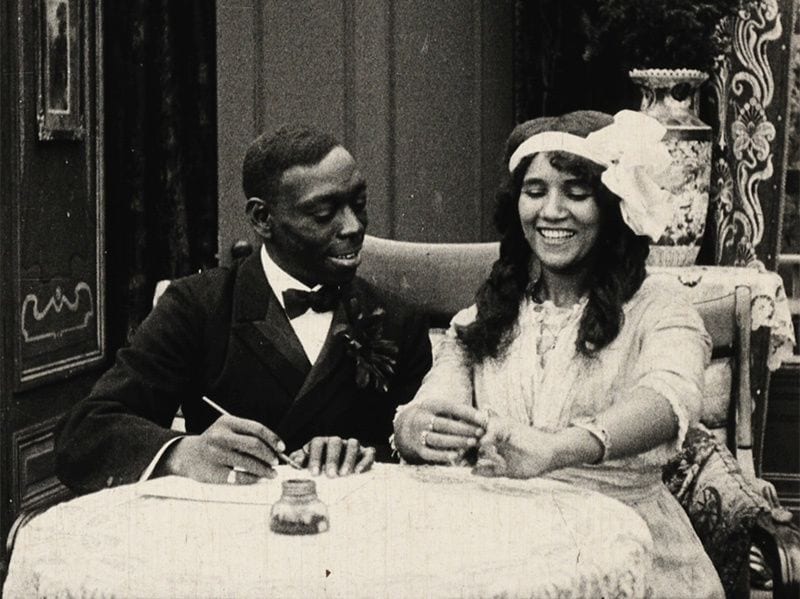
The disc closes with three films from other artists. Sidney Olcott’s The Colleen Bawn (1911), which was likely co-directed by its star Gene Gauntier, is among the films shot by the Kalem Company on location in Ireland. Based on the famous Irish play by Dion Boucicault, it’s a romantic melodrama with many characters and picturesque locations. Elsie Jane Wilson’s The Cricket (1917) is, alas, only a 12-minute fragment from a longer film, and it looks charming. Another fragment, On the Brink (1912), stars husband and wife Lois Weber and Phillips Smalley, thus leading us into Disc 2’s concentration on Weber.
Weber became the highest-paid director in the world after the scandalous Hypocrites (1915) made her a household name with its artistic depiction of nudity within a framework of social criticism. Like Guy-Blaché, she often worked in collaboration with her husband, yet she was clearly the entrepreneur in artistic control. Earlier in 2018, Milestone Films released two of her features on Blu-ray: Shoes and The Dumb Girl of Portici.

Here, we first get five one-reelers (one only a four-minute fragment) Weber made for Rex Motion Picture Company from 1911 to 1913, often on artistic topics. Two 1913 films display special brilliance and innovation. The Rosary presents its image entirely within a circle bordered by the title object, with a cross hanging in the middle. Suspense is a festival of startling close-ups and editing tricks, including cross-cuts and a three-way split-screen. Weber was absorbing Griffith and going beyond him. Both films require us to trot out the term “masterpiece”.
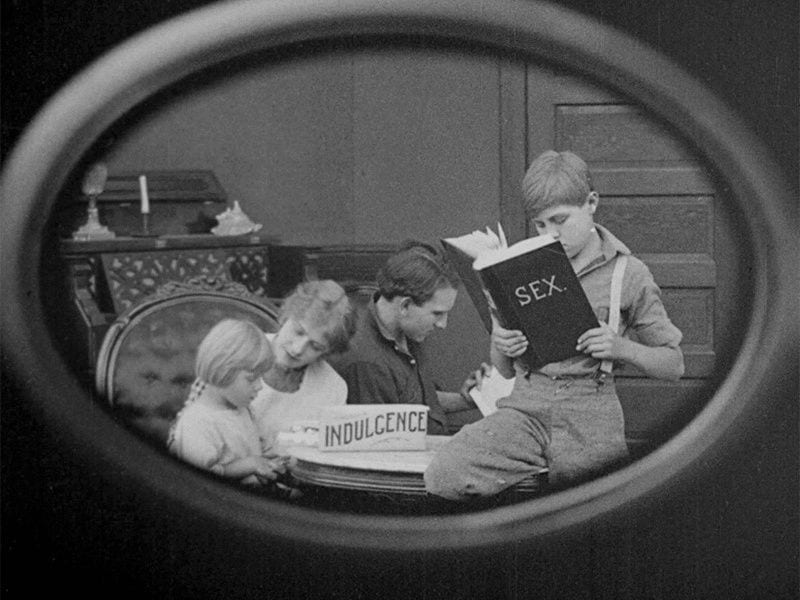
Hypocrites and the half-hour fragment of Sunshine Molly (1915) were Hobart Bosworth Productions, after which Weber made her lucrative move to Universal, where her example mentored several women directors by the end of the decade. Although Hypocrites has been available previously, archivists made an important discovery this time around: reels were out of order! The daring allegory, in which a superimposed nude spirit of Truth wanders through various scenes with her magic mirror, is now a coherent construction. The historical prologue (previously misplaced as the third reel) is a tour de force when the camera pans over the crowds who witness the unveiling of a nude statue.
Sunshine Molly is missing two reels and some of the rest are affected by nitrate deterioration to the point of abstract expressionism. This tale of oilfield roughnecks features a rocky romantic couple who must negotiate their initial bad impressions. I think of Weber as the silent era’s Jane Austen, and this is her Pride and Prejudice or Sense and Sensibility.
Weber’s Universal work is represented on this disc by a 23-minute fragment of Idle Wives (1916); two other important Universal features are saved for Disc 4, and we’ll get to them. Idle Wives is a meta-narrative intriguing enough to make us bemoan the loss of the rest of the picture. A cross-section of characters from different classes are introduced and converge upon a cinema showing an imaginary Lois Weber movie (“Life’s Mirror”) that reflects their own situations. What an idea; it’s the literalization of her philosophy that audiences should see themselves in contemporary cinema.

Then come two 1921 features for her own company, Too Wise Wives and What Do Men Want? I’ve long felt that the domestic comedy Too Wise Wives is among the best silents I’ve seen; its subtlety of gesture, combined with its sardonic tolerance of its characters’ foibles, reinforces its Austen air and clinches the case that silent features were as sophisticated and psychologically observant as any talkie. The second film, sadly incomplete, feels like a counterpart focusing on restless men who sow disaster. The all-male executive crew at Paramount refused to release it.
Disc 3, called Pioneers of Genre, focuses on serial queens, westerns, a melodrama, and Mabel Normand’s slapstick comedies with Charles Chaplin, Fatty Arbuckle and others. The serials by and starring Helen Holmes and Grace Cunard are especially interesting. Holmes’ self-contained episodes all feature stunt work on trains, while the films of Cunard and husband Francis Ford are obviously modeled on the French serials of Louis Feuillade.
Eleanor’s Catch (1913) is a short melodrama from Cleo Madison, while Ruth Ann Baldwin’s 49-17 (1917) is a western feature with a complicated story. Closing the disc are two fascinating artifacts: a regional North Dakota comedy short by Angela Murray Gibson, and writer-anthropologist Zora Neale Hurston’s footage of games among African-American children in Florida.
Discs 4 and 5 focus on social issues, and two more Weber features appear. Where Are My Children? (1916) focuses on abortion, an even more hot-button topic then (because illegal) than today; it takes the relatively safe route of criticizing “selfish” upper-class women who can afford the procedures unavailable to others. The following year, Margaret Sanger made a film advocating birth control that was banned by the courts; it’s lost. Weber played a Sanger-like advocate for birth control in The Hand That Rocks the Cradle (1917), also lost.
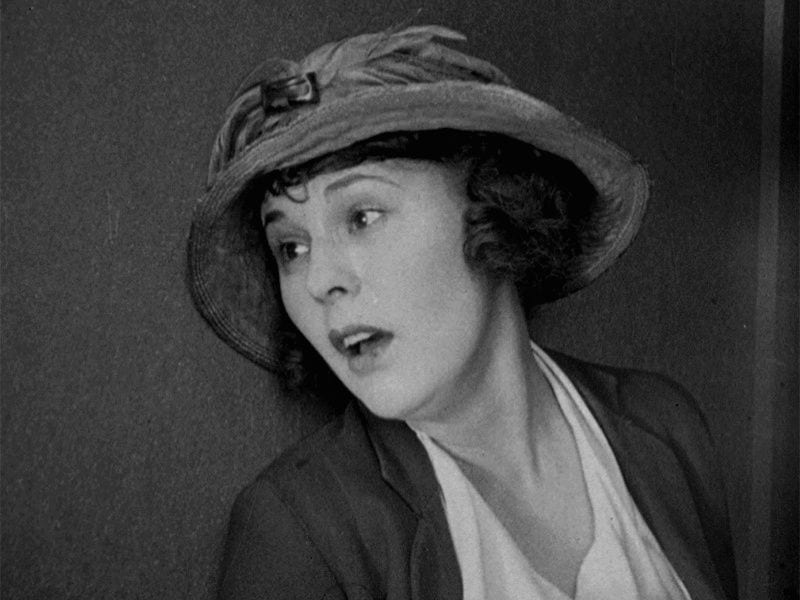
One film we do have on this set is Lita Lawrence’s Motherhood: Life’s Greatest Miracle (1925), which compares with Where Are My Children? in the initial plot point of a spoiled society woman who has evidently availed herself of an illegal abortion before. The experience of giving birth converts her selfishness amid much standard propaganda about motherhood as woman’s noblest sacrifice. While these sentiments are hardly groundbreaking, what’s important is that it probably wouldn’t occur to male filmmakers to use routine pregnancy as a storyline and theme. Pregnancy is usually only a plot point when an unwed mother is suffering, which also happens in many of the films here.
An intriguing note in the booklet states: “Modern sources suggest director Lita Lawrence may have been African American, but this information remains unverified.” One suggestive detail is the scene where the husband looks in the maternity room for his newborn, uncovering one child who turns out to be black. While another film might use this as a quick visual gag, this moment extends as the man is smitten with the baby and plays with it affectionately after his initial surprise.
The other Weber film included is the incomplete Scandal (1915), in which gossip about adultery ruins several lives while scandal is symbolized by a grotesque swamp monster superimposed over the image at various moments. As a signal of a woman’s sensibility behind the camera, men are depicted pointedly as the primary carriers of gossip, and a title card states that men’s clubs ruin more reputations in an hour than an afternoon sewing circle. This is among several movies in the box preserved from the Dawson City cache, which are usually recognizable by telltale water damage on the sides.
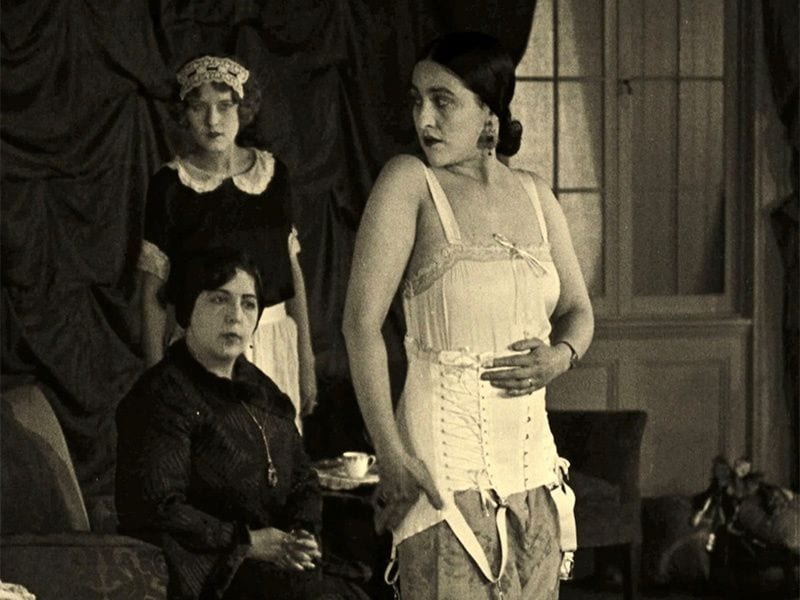
Lule Warrenton’s When Little Lindy Sang (1916) is an eye-opening one-reeler about racism among children. Ernestine Jones plays the only black girl in a classroom, and she’s humiliated in various ways until her piercing voice somehow calms everyone during a fire. The sentimental story and recuperative ending are par for the era; what’s news is that such subject matter was addressed in the first place.
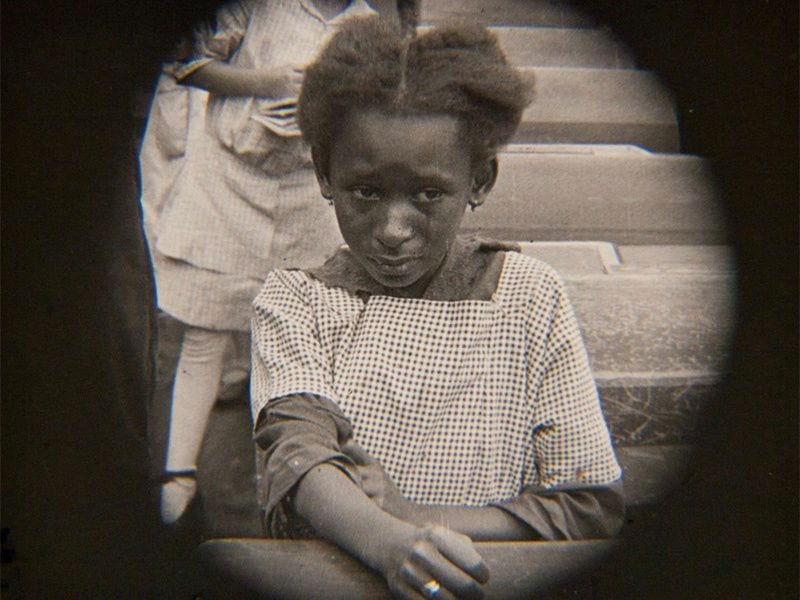
Marion E. Wong’s Mandarin Film Company of Oakland, California, is responsible for the first feature with an all-Chinese-American cast. Unfortunately, The Curse of Quon Gwon (1917) is missing most of its reels and all intertitles, making the fragmentary story hard to follow even where nitrate decomposition isn’t present. Even so, it’s a window onto a world we’re not used to seeing in this era. While the filmmaking throughout this set is at least competent and professional and in many cases better than that, what’s often more worthy of attention is the mere existence of certain themes and viewpoints. Here’s evidence of the richness of a cinematic era that we’re used to thinking of in narrower terms.
Two lighter one-hour features are Elsie Jane Wilson’s The Dream Lady (1918) and Nell Shipman’s Something New (1920). The first is a charmer about a heroine (Carmel Myers) liberated by a fortune. This allows her to live as eccentrically as she likes, as she becomes a “witch” or “fairy” who grants wishes. She encourages one woman to dress as a man in order to pursue her vacation without harassment, and this leads to a misunderstanding when a potential suitor spots them kissing.

Shipman’s film stars herself as a writer who creates a story — illustrated by the rest of the film — about a heroine (herself) driving a new-fangled automobile across rough terrain while the owner is injured. Another Shipman feature, Back to God’s Country (1919), shows up on Disc 6. Based on one of James Oliver Curwood‘s animal stories, this adventure shot in Alberta, Canada, features Shipman’s daring heroine hijacking a dogsled to rescue her helpless husband. She also tames a savage dog into helping her. In other words, both films feature Shipman’s heroines rescuing the men.
Two 1918 fragments tantalize us as the work of Ida May Park, and both are about heroines suffering sexually at the hands of men. Park’s romantic melodrama from the same year, Broadway Love, contrasts “purity” with gold-digging and appears on Disc 6. We get to see Lon Chaney without makeup, and that’s one of the best parts of a confusing story in which the two main men look nearly identical. Viewers are asked to swallow that after throwing herself from a moving car, our frantic heroine (Dorothy Phillips) accepts the cad’s apology and kind of likes him. Not everything in these movies is progressive, and in fact, this is the only movie with a blackface character — a maid who tosses Chaney on his ear.

Sexual suffering also defines Dorothy Davenport Reid and Walter Lang’s beautifully directed The Red Kimona (1925), written by Dorothy Arzner and Adela Rogers St. Johns. The film takes off from the real-life story of a prostitute (played by Priscilla Bonner) who was acquitted of murdering her pimp after she shot him down. St. Johns’ father defended the woman, who sued the production for using her real name, as we learn from Anthony Slide’s informative commentary. Among other technical qualities, the movie boasts several scenes with red-stenciled elements.
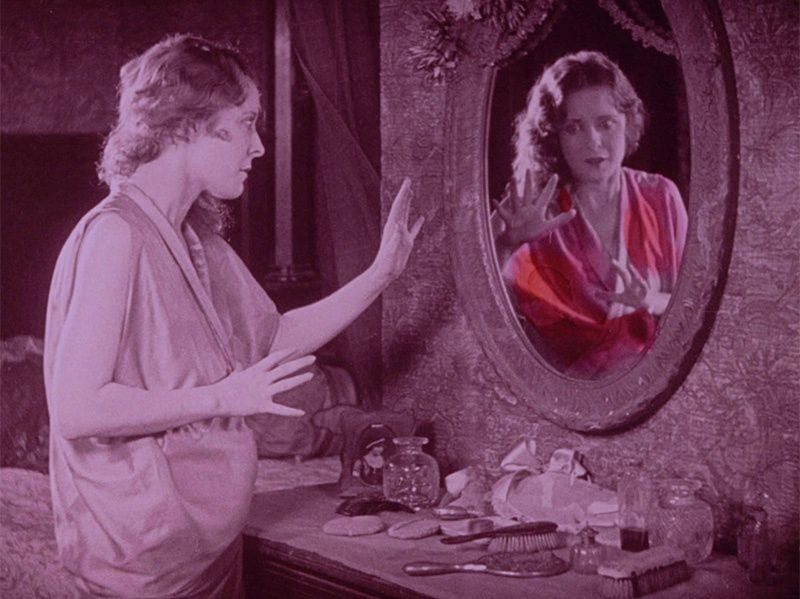
Reid’s Linda (1929), one of the best revelations in the box, wrenches pathos from one of its deepest sources: the conflicts created by basically good people who get in each other’s way. Accurately advertised as “an exquisite cameo of backwoods life”, the story follows a rural heroine (Helen Foster) who, before she can find happiness with a handsome city doctor (Warner Baxter), must detour into a marriage with a roughneck (Wallace Beery). The film ignores the typical trope of “wholesome country vs. wicked city” and argues that Linda is better off in the city. Apart from the gorgeously shot compositions on this excellent print, the film offers many refreshing examples of female friendship. As in so many of these films, pregnancy is a central concern.
The most unusual film in the set is Alla Nazimova’s self-financed production of Oscar Wilde’s Salome (1923), a self-conscious art film that’s also important in queer cinema, or at least as camp cinema. As the petulant and complexly re-imagined daughter of Herod, Nazimova is as riveting for her balletic movements and her dazzling eyes as for showing off the extravagant costumes and sets of Natacha Rambova (Mrs. Rudolph Valentino). When I first saw this years ago, it seemed a static affair; this new 2K master from Lobster Films looks dazzling with its color inserts of the moon and its heightened detail.
The miscellaneous features on Disc 6 include the above-mentioned films by Park and Shipman plus Julia Crawford Ivers’ The Call of the Cumberlands (1916) and Frances Marion and Chester Franklin’s The Song of Love (1923), a Norma Talmadge production. Ivers’ film is another exquisitely shot rural tale about leaving the backwoods for the city, although in this case (and unusually in this set), the main character is a man (Dustin Farnum) while the woman he loves is mostly passive except for chasing off an attacker. There’s surprising nudity in an art class.
The Talmadge film openly mines the vein of Hollywood “exotica” triggered by Valentino’s The Sheik (1921). Set in Algeria, it concerns a planned uprising by desert Tuaregs against the French “Christian dogs” and “unbelievers” who rule as colonizers. For some reason, many of the Arabs have names from India. Talmadge plays a haughty dancer torn between the “fanatical” chief (Arthur Edmund Carewe, tall and scowling) and the Latino-named spy pretending to be an Arab (Joseph Schildkraut in full Valentino mode of pointy sideburns and limpid eyes). A headstrong vamp, she embodies the idea that love crosses all boundaries and that women in love will do anything. Her fate ends one way on this German print, but titles explain further developments in the US version. Some plot elements predict the 1926 operetta The Desert Song, which had been inspired by real events in 1925 but must have also taken cues from hokum like this.
While several films in this box have previously been released on VHS or DVD, often by Kino, many haven’t. Most are now freshly scanned in 2K or 4K and provided with new scores, most of which are effective and consistent with the era’s vernacular. A handful of films offer informative commentary tracks by scholars such as Gaylyn Studlar and Anthony Slide, and some discs have brief topical interviews with several critics. Since the Blu-ray edition reviewed here contains several extra films, it’s preferable to the DVD configuration.
The bottom line is that this box set is an essential gathering of treasures that help redefine an era of glorious creativity and often surprising access to means of production. High-profile women filmmakers wouldn’t contribute to the Hollywood industry in such numbers until the 21st Century, and this box proves that such input isn’t unprecedented.
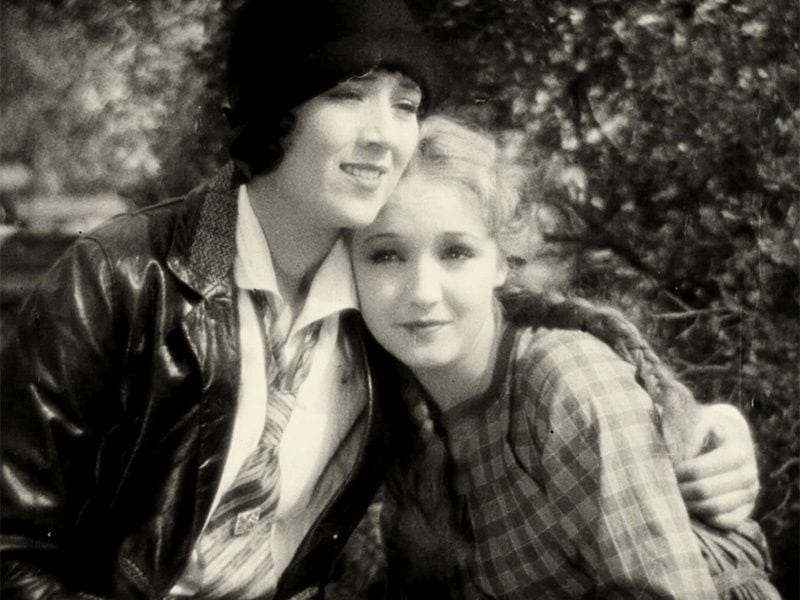


![Call for Papers: All Things Reconsidered [MUSIC] May-August 2024](https://www.popmatters.com/wp-content/uploads/2024/04/all-things-reconsidered-call-music-may-2024-720x380.jpg)



